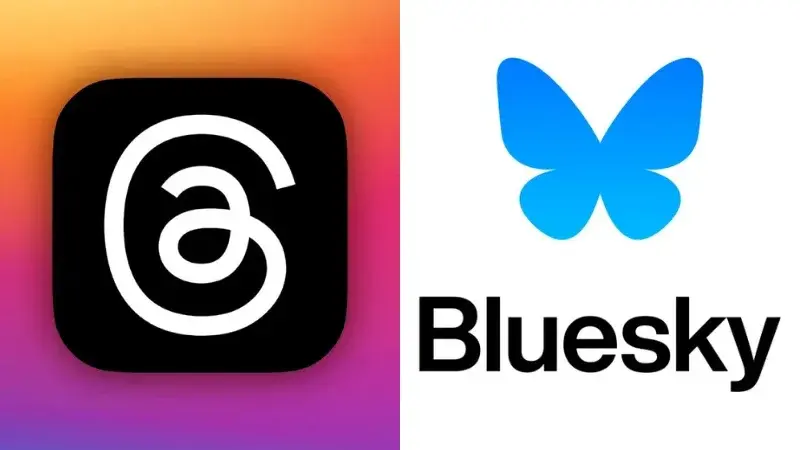Need advice? Let's talk.
Get straightforward guidance from your broadcasting partner. Schedule a call to chat with the team about your radio station.
Book DemoThe Best Social Media Strategies for Radio Stations in 2025
Discover the top social media strategies for radio stations in 2025 to connect with audiences and grow your brand.

Think your radio station doesn’t need a social media presence? You may want to reconsider. It’s 2025 after all. Connecting online with your audience is now an indispensable tool for radio stations looking to grow their brand.
There’s a lot of misconceptions out there, and it may feel like a daunting task to establish a social media presence. The good news? It isn’t. Anyone can do it with a little know-how. So, to kick off the New Year, we’ve compiled the best social media strategies for radio stations in 2025.
Social Media Strategies for Radio Stations: Is it Necessary?
Social media is often thought of as a purely visual medium, but it’s much more than that. It’s an integral part of your brand identity. Consider how much sound plays a role in today’s social media—more than 80% of TikTok users say that sound is essential to fully experience the platform. Moreover, videos with sound perform twice as well as those without.
Short-form video apps like TikTok have helped revolutionise the music industry by hooking listeners with viral song snippets. More recently, the virality has spread to trending sounds—including audio pulled from podcasts and radio clips uploaded to the app.

It also serves another important function—a search engine. Forbes Advisor recently revealed that 25% of Americans prefer to find and purchase from brands discovered on social media. Among Gen Z, that figure jumps to 40%. Compared with their Gen X counterparts, they’re using Google 25% less.
So, is social media necessary for radio stations? Well, in short, yes. If you choose to forgo social media, you’re much less likely to be discovered, especially by younger generations.
Want tools to help you stay consistent and engaged? Explore Radio.co’s features built for broadcasters!
Building Your Brand Identity and Standing Out on Social Media
Let’s go through some of the top tips aimed at building social media strategies for radio stations in 2025:
1. See where your audience is—but don’t ignore other platforms
Gen X listens to radio most frequently, and Facebook is their social media platform of choice, but that doesn’t mean you should ignore other platforms. Gen X is also the fastest-growing generation on TikTok.
Don’t make the mistake of sticking purely to Facebook. Instead, try to build a presence across all the main platforms—including Instagram, X (formerly Twitter), and TikTok.
2. Engage with your audience.
A common mistake many brands make is posting content and then leaving it alone. If you really want to boost engagement and foster a sense of community with your audience, you need to engage with the post after it goes live.
More than half of internet users say that the most memorable brands are the ones that respond to users in their comments. Treat social media as a space for conversation. Talk to your audience, and show them that you’re listening.
3. Set up a posting schedule.
Your posting schedule is a guide to ensure you have a consistent post frequency for your audience—and it helps you engage with them every week. How often you post comes down to the needs of your brand and your audience.

A study by HootSuite and Critical Truth found that brands post, on average: 18 times per week on Facebook and X, 12 times on Instagram, 8 times on LinkedIn, and 6 times on TikTok.
While you don’t need to reach these numbers, it’s important that you post frequently and engage with your audience every week.
4. Diversify your content.
When creating social media content, videos are an obvious choice for radio stations. They rely on sound, and you’re a broadcaster. However, don’t let videos be your only form of content—variety is the spice of life. Take into account the recent 2024 Social Media Industry Benchmark Report by Rival IQ, which found that:
Photos are most engaging on Facebook.
Reels (short-form videos) are most engaging on Instagram.
Videos are most engaging on X.
You can, and should, find ways to incorporate still images and stories into your social media strategy. Every platform is different, so while videos generate engagement on some platforms, it’s not a one-size-fits-all solution.
Social Media Trends and Changes for 2025
1. Reels are the most engaging post type on Instagram.
Across all industries, the Social Media Industry Benchmark Report found Reels to be the most engaging post type on Instagram. These findings are backed by a SocialInsider study, which revealed that Reels have a reach rate of 30.81% and twice the number of impressions compared to other content types. Be mindful of this trend, however—engagement is down 25% from 2023, so be sure to diversify your content in case this continues.
2. Long-form videos are making a comeback.
Supposedly, Gen Z has an attention span of just eight seconds. Is there any truth to that? Maybe not.
When TikTok first launched, videos were capped at 15 seconds. The limit is now 10 minutes. The company itself reported that users spend more than half their time on the platform watching content more than one-minute long. This tracts. In fact, can you guess the most popular social media app among Gen Z? It’s YouTube.
According to Buffer’s research, the length that gets the most views is between three and 10 minutes. Viewership descends from there, showing that the shorter the video, the lower the view count.
3. SEO has come to social media.
Search engine optimization isn’t just for legacy search engines like Google. One study found that 74% of Gen Z use TikTok for search, with 51% favoring it over Google. So how can you get your content discovered? It’s more than adding a couple hashtags, you need to include keywords in your social media posts, add alt-text to your photos, and subtitles to your videos.
4. Community is key.
Influencer fatigue is real. Today, more than 80% of people say that a brand’s use of influencers either has no impact or a negative impact on the way they think of a brand, and more than 50% of people say they now simply scroll past influencer posts.
People are looking for real, authentic content, but where are they looking? More than 75% of internet users participate in online communities, with 30% of users citing raw, meaningful conversations as the reason they prefer it over other forms of social media.
So how can you get ahead of this trend? Building an online community for your radio station can help you foster connections between your listeners and help you create a brand image that focuses on authenticity and belonging.
Looking to build authentic relationships with your audience? Create a thriving online community with Radio.co and put authenticity at the heart of your station.
5. Threads and Bluesky are giving X a run for its money.
Launched as a competitor to Elon Musk’s X in 2023, Meta’s Threads has quickly ballooned to 200 million monthly active users. In contrast, X is trending downward, not up. Between the start of 2023 and the end of 2024, X’s user base is expected to decrease by 32.7 million users. Similarly, X saw a 7% decrease in usage from businesses on the platform.

So, what gives? That’s an essay for another day. Besides layoffs and mass resignations, Musk’s fired the entire communications team (bar one), suspended journalists’ accounts, and allowed viral misinformation, hate speech, and antisemitism to flourish unchecked. Most recently, he used the platform to work directly with Donald Trump's campaign to spread misinformation in the 2024 US presidential elections and limit negative coverage. Unsurprisingly, an exodus of brands, advertisers, and users alike ensued.
Enter Bluesky. Created by Twitter’s founder Jack Dorsey, the app functions very much like Twitter, and has seen a surge of new users following the election. With over 15 million subscribers and counting, Bluesky could become the successor to X. So if you’re not already on X, it may be worth considering joining Threads or Bluesky instead.
3 Examples of Radio Stations Shining on Social Media
1. BBC 1 Radio: Embracing online trends.
After gaining fame on Breakfast with Greg James, the disappearance of a popular duck sparked an interesting social media strategy for BBC Radio 1. Not only did BBC Radio 1 unveil a statue of the duck, named Long Boi for his strange stature, but the radio station has been consistently incorporating Long Boi into their social media. Recognizing Long Boi’s popularity, particularly with Gen Z internet users, BBC Radio 1 has managed to turn something from one of their radio shows into an internet sensation.
On one such video, a user commented: “Listening to Greg’s shows is like being part of an ‘in joke,’ and the ‘in jokes’ just reappear every now and then, and it brings me so much joy.” This comment encapsulates how BBC Radio 1 is using online trends, some of which they created themselves, to foster a sense of community on their social media.
2. NPR: Going behind the scenes.
Not only does NPR have multiple Facebook pages to share its content, but it also has one that’s specifically dedicated to behind-the-scenes content. NPR Extra focuses on the people who bring NPR to life, which is a great way to help foster a feeling of connection with the hosts that NPR fans listen to every day.
Behind-the-scenes content like these posts makes your radio station seem relatable and authentic, and authenticity is what your listeners want the most.
3. Capital: Repurposing content.
We’ve said it before and we’ll say it again—repurpose your content! Robust social media strategies for radio stations don’t need to be time consuming. Chances are, you probably have some content gold that’s ripe for repurposing. Capital FM are masters of this.
The EE Official Big Top 40 from Global, hosted by Will Manning, takes a smart approach to content creation.
This behind-the-scenes footage, filmed during the airing of the show each Sunday, is then transformed into bite-sized clips perfectly tailored for TikTok, consistently racking up millions of views. The genius lies in its efficiency: since the filming happens during the broadcast, all that’s needed is a quick edit before posting, showing that a good social media content doesn’t need to take hours to create.
Final Thoughts: Social Media Strategies for Radio Stations in 2025
Ready to level up your station’s online presence? With these social media strategies for radio stations, building your brand and connecting with listeners has never been easier—or more important.
Social media isn’t just a trend; it’s a vital tool for growth and engagement in 2025. So why wait? Start implementing these tips today and see the difference for yourself.
If you’re looking for more ways to enhance your station’s impact, explore our resources at Radio.co or speak to one of our experts today.
Did we miss your favorite social media trend or tip for 2025? Let us know on our socials!



